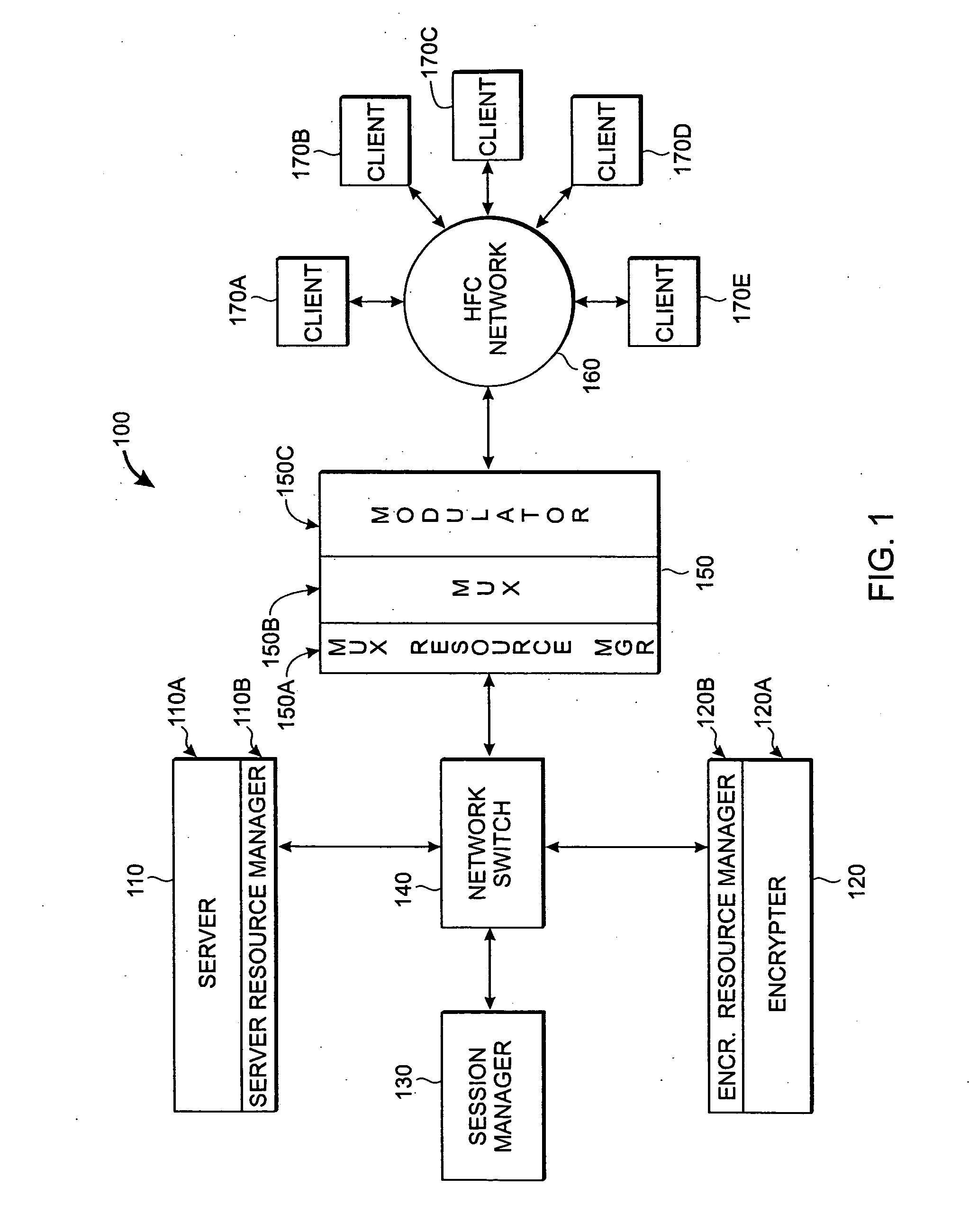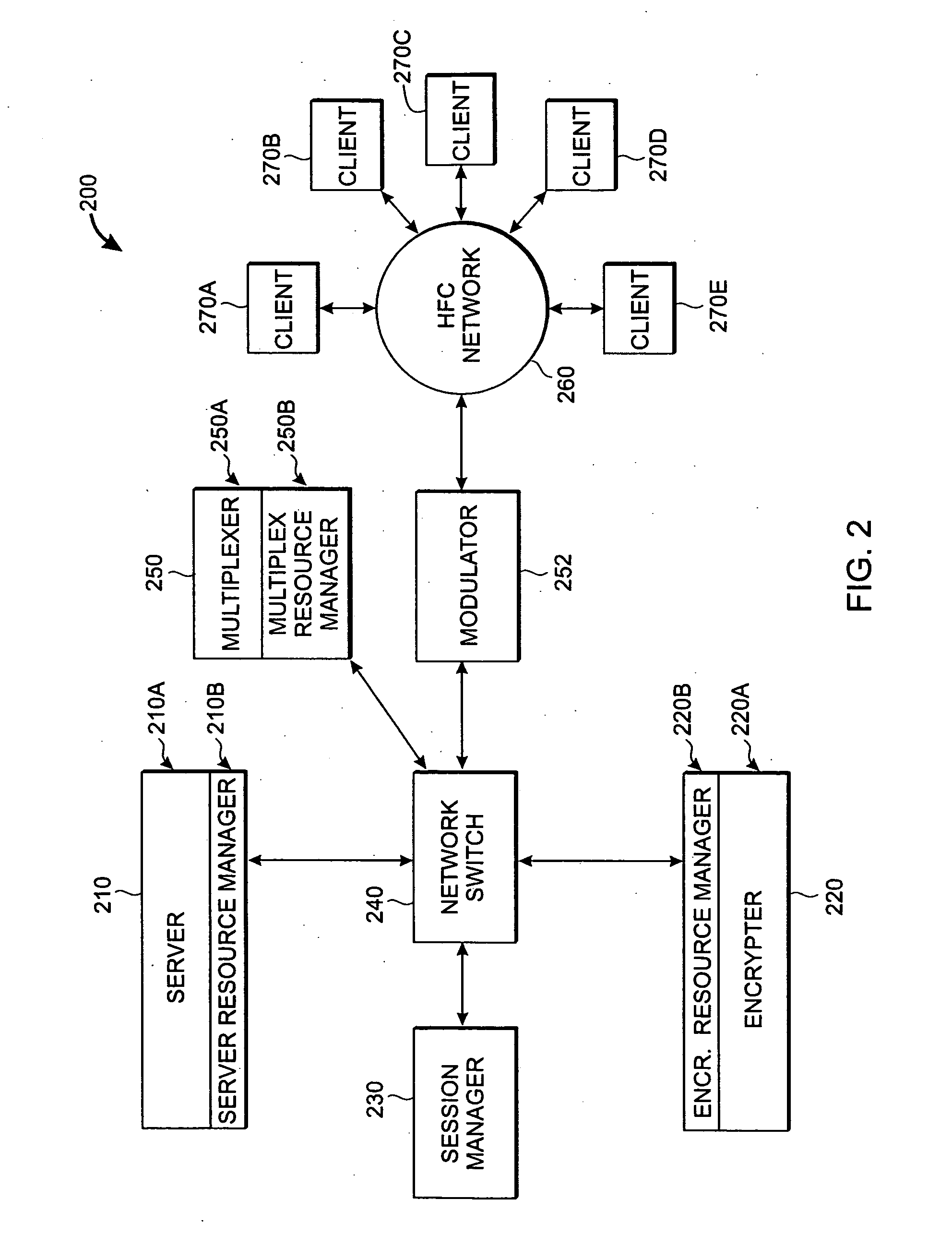Video multiplexer system providing low-latency VCR-like effects and program changes
a video multiplexer and low-latency technology, applied in frequency-division multiplexing, data switching networks, instruments, etc., can solve problems such as difficult introduction of technological innovations, high-speed, high-performance processing, data routing, etc., and achieve the effect of minimizing visual disruption of the displayed video imag
- Summary
- Abstract
- Description
- Claims
- Application Information
AI Technical Summary
Benefits of technology
Problems solved by technology
Method used
Image
Examples
Embodiment Construction
[0034] According to the present inventive technique, a video distribution system comprises one or more cable headends and small “edge” devices (i.e., all interconnected by a large metropolitan-area network. FIG. 1 is a block diagram of one embodiment of such a system 100. In FIG. 1, a “headend” network portion of the system 100 comprises server module 110, an “encrypter” module 120, a session manager 130, and a network switch 140. The network switch 140 provides connectivity between the various headend modules and any “edge” modules. In FIG. 1, a single representative edge module (150) is shown—an integrated multiplexer / modulator module 150 that acts as a network edge device to which a plurality of client devices 170A, 170B, 170C, 170D and 170E connect via a physical distribution system 160. The physical distribution system 160 provides “last mile” connectivity to the client devices located at end user locations, and is typically provided by a hybrid fiber / coax (HFC) or similar dist...
PUM
 Login to View More
Login to View More Abstract
Description
Claims
Application Information
 Login to View More
Login to View More - R&D
- Intellectual Property
- Life Sciences
- Materials
- Tech Scout
- Unparalleled Data Quality
- Higher Quality Content
- 60% Fewer Hallucinations
Browse by: Latest US Patents, China's latest patents, Technical Efficacy Thesaurus, Application Domain, Technology Topic, Popular Technical Reports.
© 2025 PatSnap. All rights reserved.Legal|Privacy policy|Modern Slavery Act Transparency Statement|Sitemap|About US| Contact US: help@patsnap.com



